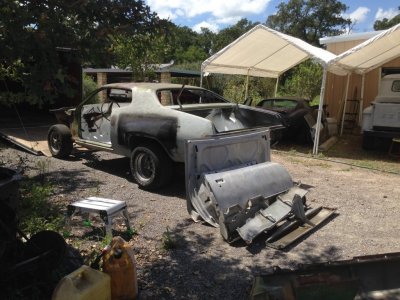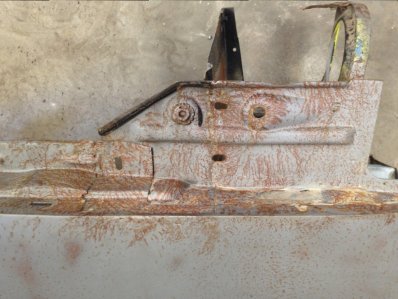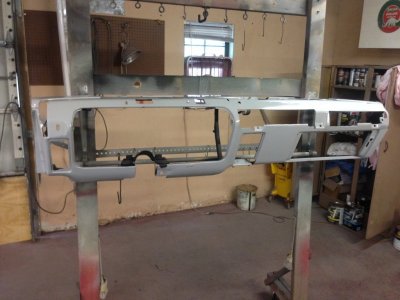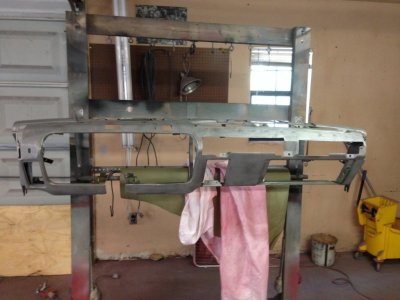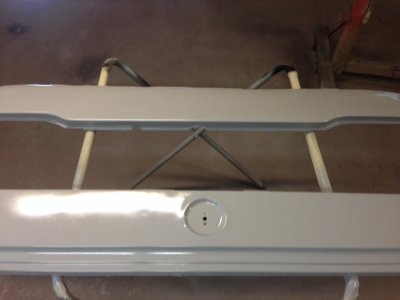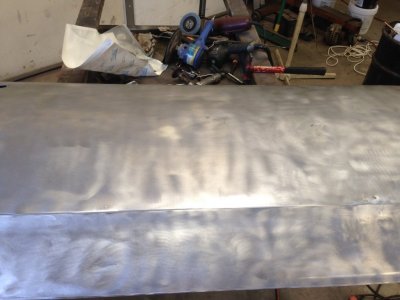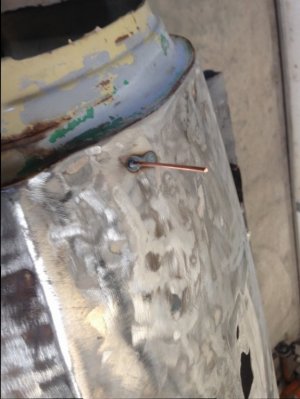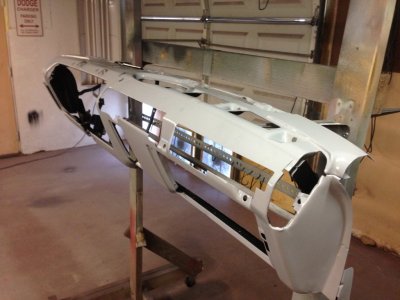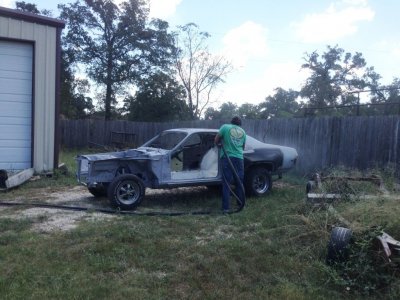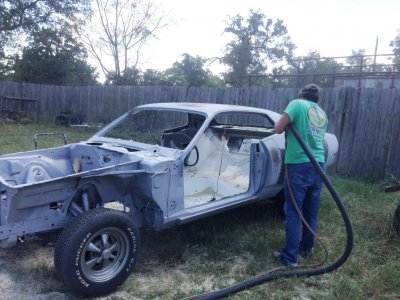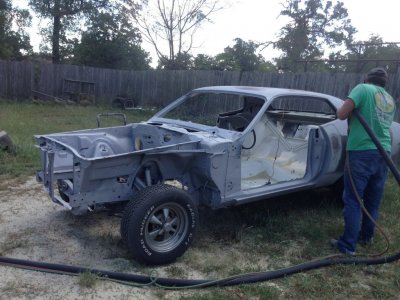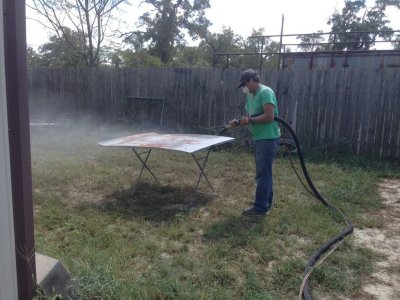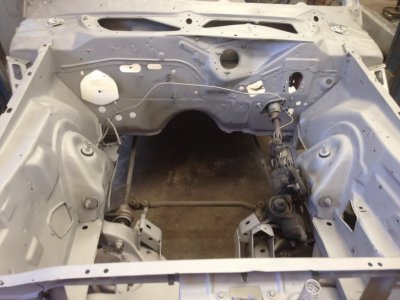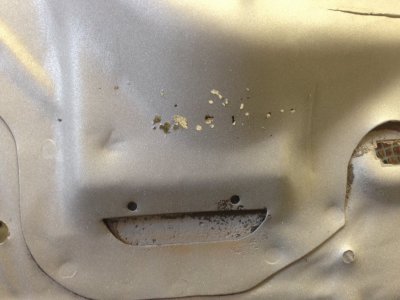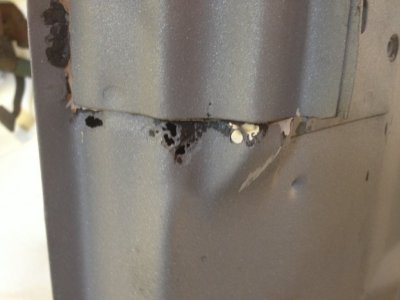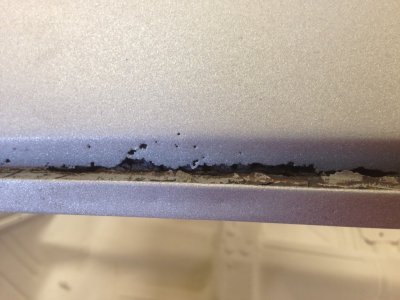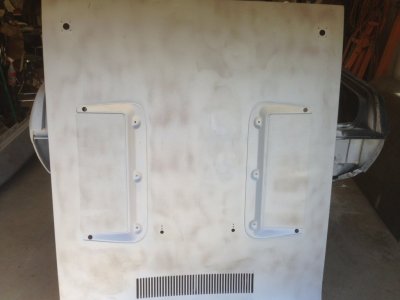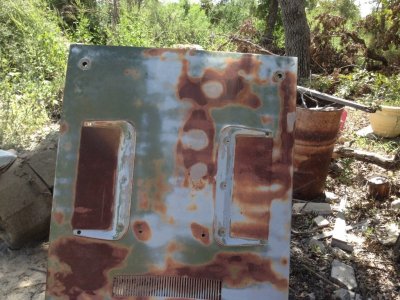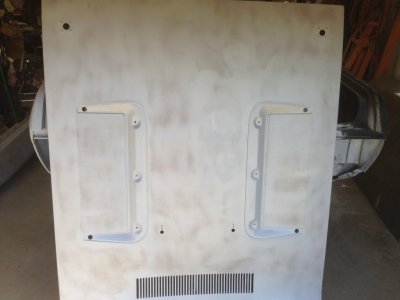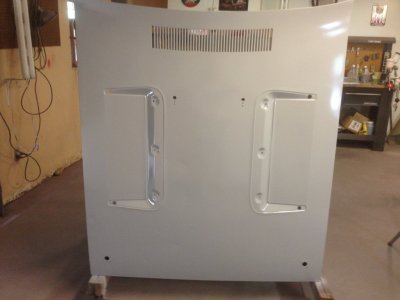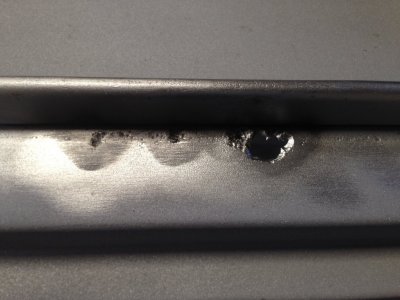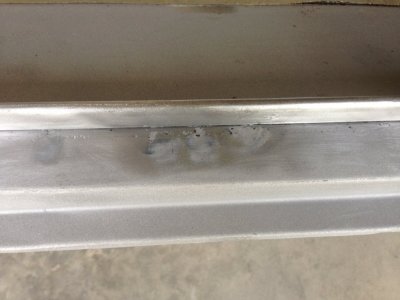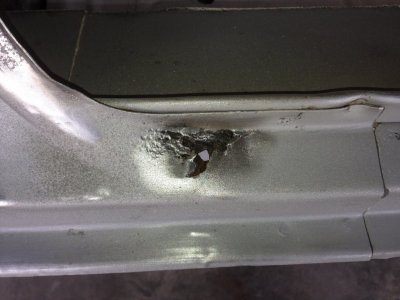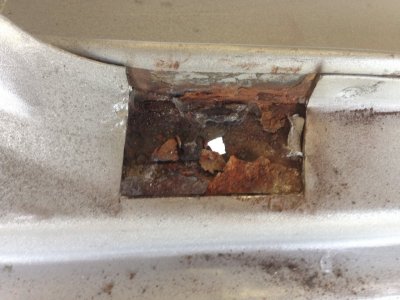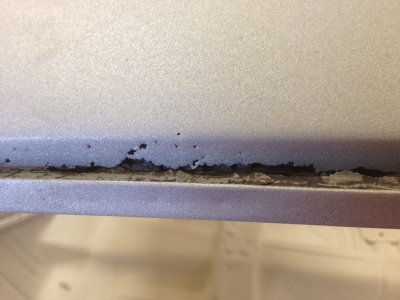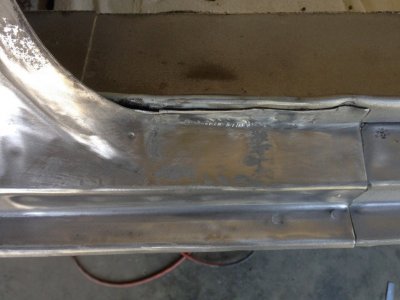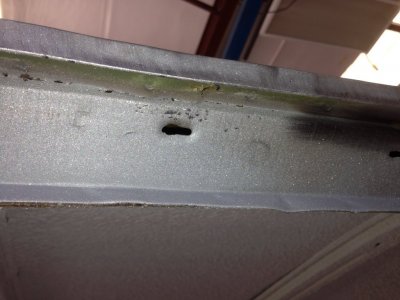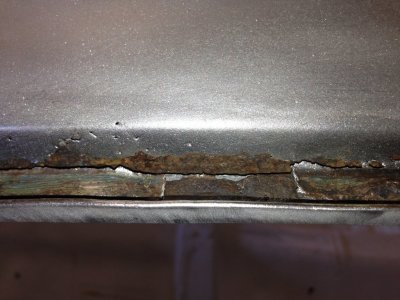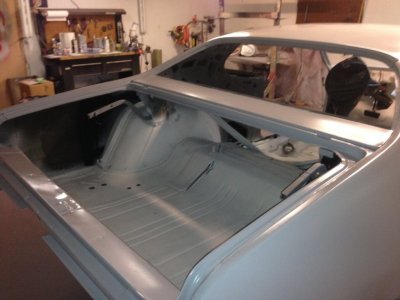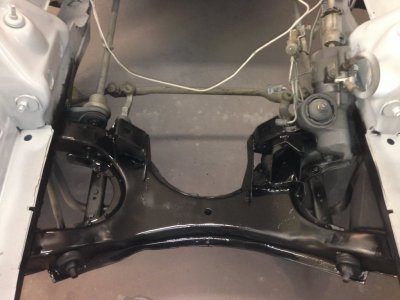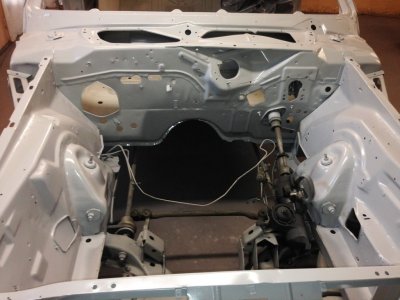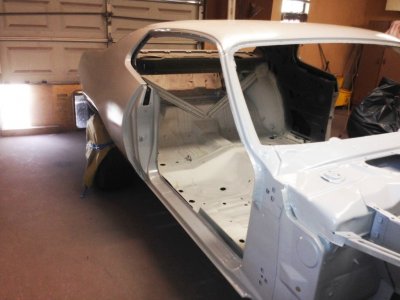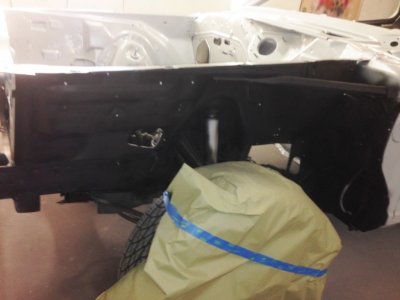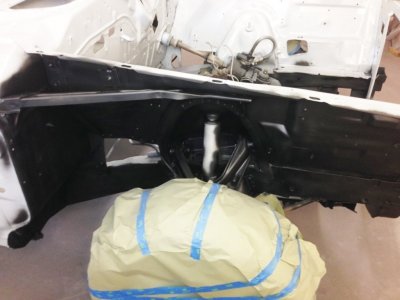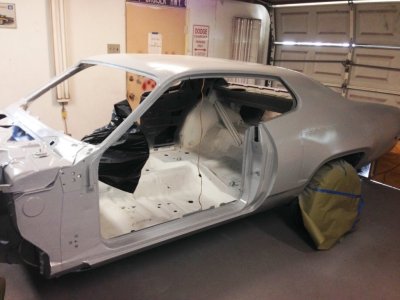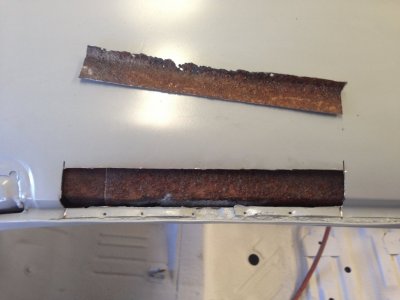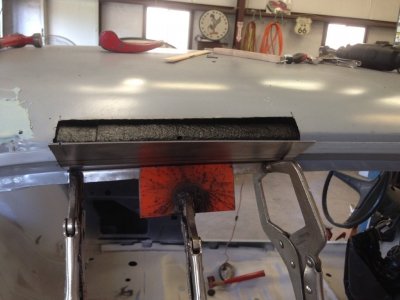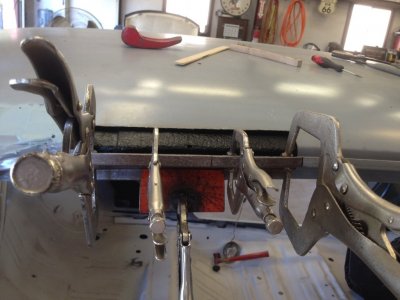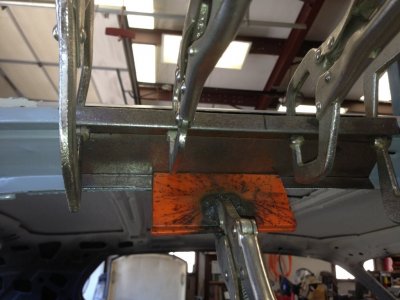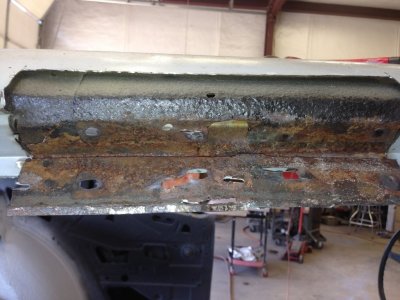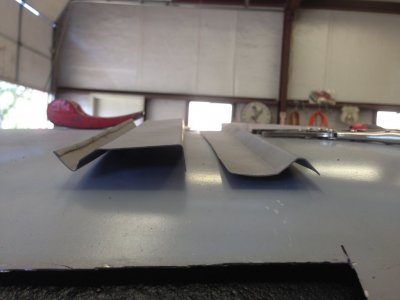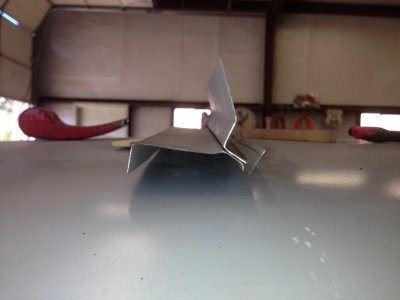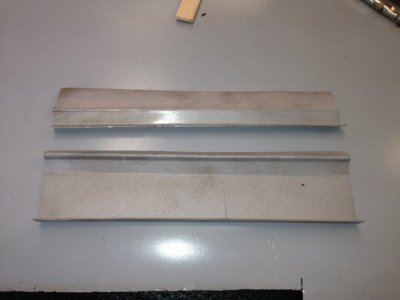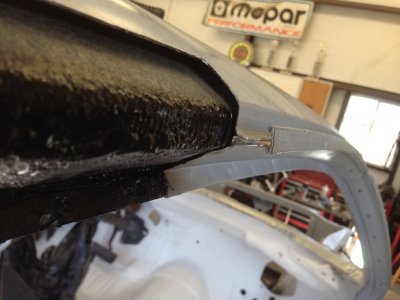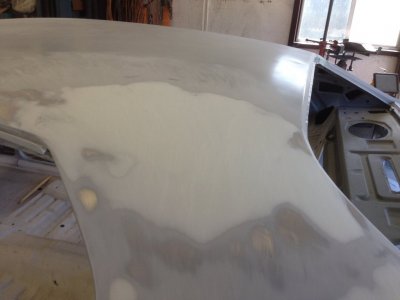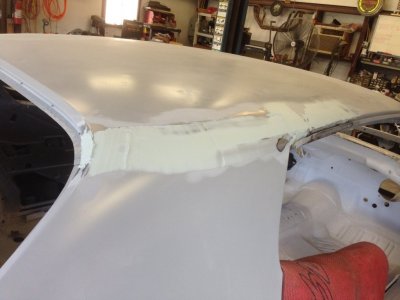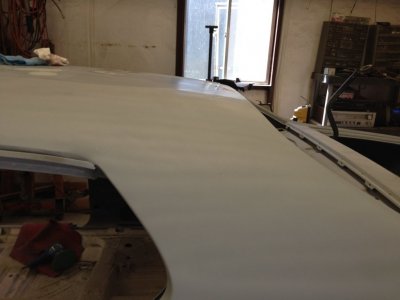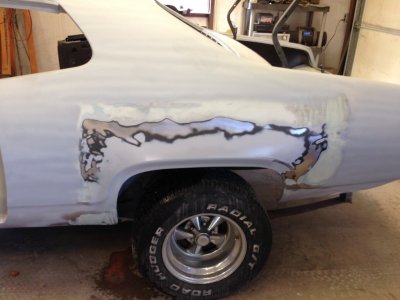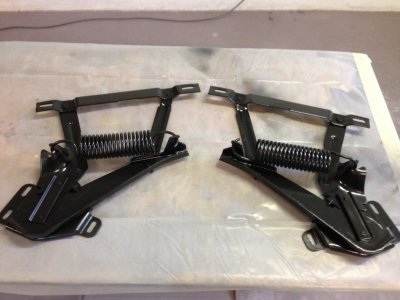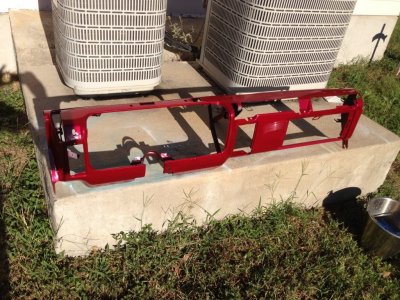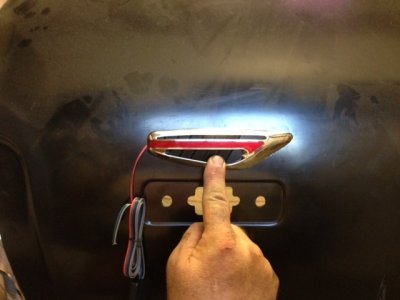To continue, here is my take on media stripping. I have done it myself using soda, aluminum oxide, coal slag (black beauty) plastic beads and other media. There are a lot of different types of media used in stripping vehicles. I have even used Walnut shells to polish a cam or crank shaft but it is more for polishing and is not used in stripping paint. But never, ever use sand.
Now soda removes paint but it will not remove rust. It can remove body filler but it takes a little time to eat it out. It leaves the metal in great shape and doesn't etch the metal. The metal will look like it just came from the stamping machine. Once soda blasted the metal can set for a long period without flash rusting because the soda protects it. But it can be a pain to clean it off the metal. You have to wash and wash (soap and water and immediately air dried with compressed air) to remove the soda, if you don't get it clean the paint wont stick. But once clean, you do not have to DA sand the metal before priming. Just use an epoxy primer and your good to go.
Now a more aggressive media like ground glass (consistency of fine sand) is great for removing paint and rust at the same time but it will etch the metal. Its not as difficult to clean the metal to get rid of the glass particles as in soda but you have to DA sand the metal to get a smooth surface using 180 to 400 grit paper. If you don't DA sand the metal and just paint, the resulting paint will look like it has a lot of orange peel when in actuality its the etching of the metal from blasting that makes the paint look that way. So with this type of media there is some sanding involved.
With this car we have to use a more aggressive media because there is a lot of rust to be removed. See the pic of the hood. Now in the media stripping process add in wet or dry blasting. With dry blasting there is a lot of dust floating around and if you don't do it right you can over heat or stress the metal. With wet blasting, no dust and it keeps the metal cool but you have to add a rust inhibitor to keep the metal from flash rusting because of the water. Now this is the first time I have used wet blasting, and I don't like it! I added the chemical to keep the metal from flash rusting but for whatever reason it didn't work to my satisfaction.
So I have to re-blast the front fender I did first and a few places on the truck lid that flash rusted. They are just too bad to try and sand it out or off. At least the other parts I wet blasted I can work with because they didn't have time to flash rust. I would tell you what I did with the other pieces to keep them from flash rusting but you wouldn't believe it, you would say Oh My God! You didn't! But as I saw it, it was an emergency at the time, and I didn't want to re-blast every part I had just done.
Ok, I'll tell you, I first thought of diesel fuel because of the oil in it and I had 5 gallons at hand, but that is way to dangerous. But I just happened to have in my truck some cans of, wait for it,,,, WD40, and I sprayed down the parts. It kept the other parts from flash rusting at all, no flash rusting. But WD40 has silicone in it that is an absolute no, no having around painting.
For the other parts with WD40 on them I set up a three stage cleaning station totally separate from each other to eliminate cross contamination of silicone. First stage coating and soaking the part with engine foamy degreaser then scrubbing with a brush. Second stage washing with dawn grease and oil cutting soap, the kind they use on wildlife caught in oil spills. Third stage another washing with this soap and scrubbing with a brush. Then a complete rinsing and compressed air drying. Then a complete wipe down with a paint wax and grease remover.
Added - I thought about using oven cleaner like I have used on really dirty / oily engines, but that would probably harm the bare sheet metal, causing probably something like streaking and discoloration.
Live and learn
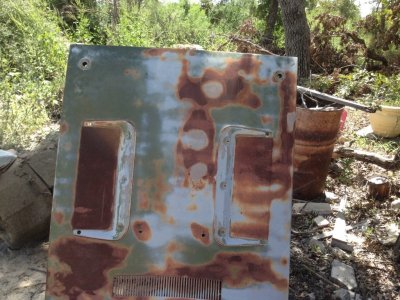
I like it.


